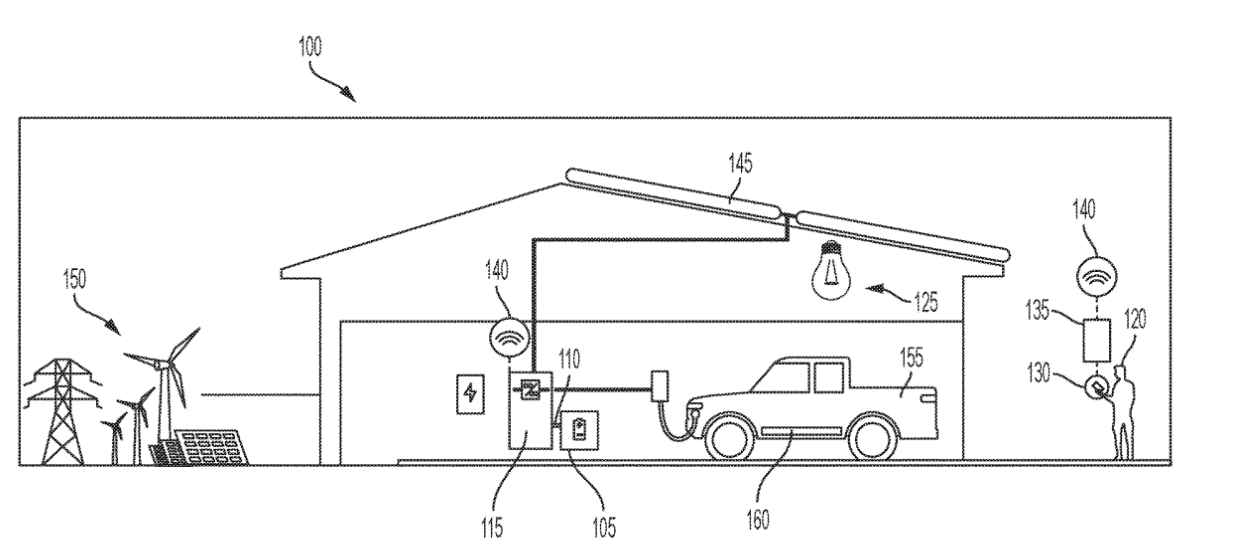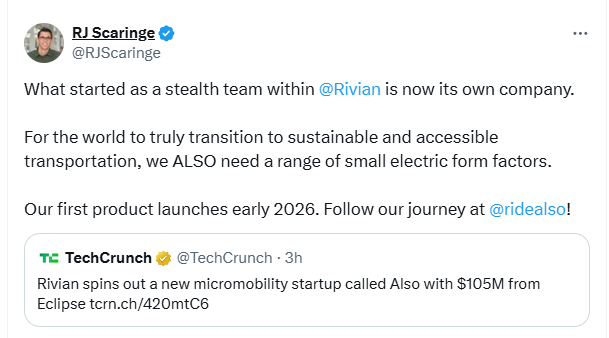Rivian's Vision: Vertical Integration, AI-Driven Future, and Disrupting the Automotive Landscape
March 31, 2025
Full interview: RJ Scaringe in conversation with NVIDIA's VP of Automotive, Rishi Dhall

Rivian CEO R.J. Scaringe in conversation with NVIDIA's VP of Automotive, Rishi Dhall
TL;DR:
In a recent interview with NVIDIA, Rivian CEO R.J. Scaringe discussed the company's commitment to vertical integration as a key advantage in the EV market, particularly for advancing AI and self-driving capabilities. He highlighted the challenges faced by traditional automakers with their fragmented network architectures and emphasized Rivian's unique approach. R.J. also shared insights on Rivian's focus on self-driving, their potential interest in robotics, and his strong belief that car companies with outdated network architectures won't survive the next decade.
In a recent interview with NVIDIA's VP of Automotive, Rishi Dhall, Rivian's strategic direction and R.J. Scaringe, the founder and CEO of Rivian's, perspective on the evolving automotive industry were revealed. Several key themes emerged, highlighting Rivian's unique approach and ambitious vision for the future of electric vehicles.
Addressing the EV Market and Rivian's Advantage
The discussion began by acknowledging the current state of the EV market, with R.J. noting that the US lags behind China in market share due to a lack of compelling choices in the sub-$50,000 price range. R.J. specifically called out the Tesla Model Y and 3 as the primary strong contenders. This point underscored Rivian's commitment to eventually addressing this gap with their upcoming R2 and R3 models. Separately, during the rapid-fire Q&A, when asked what single piece of technology he would "steal" from another automaker, R.J. pointed to "Scale, leverage." Regarding the challenge of affordability versus autonomy, R.J. indicated Rivian's current focus on the R2 and R3 platforms, stating they are "not even working on a 20k car."
A significant portion of the interview focused on Rivian's dedication to vertical integration. This strategy, shared by only Tesla in the Western world, was presented as a crucial differentiator from tradition vehicle OEMs. R.J. drew a historical parallel to the early days of automotive computing, where the initial fuel injection systems, despite having computers, eventually saw their control units outsourced to third-party suppliers like Bosch. This trend continued, leading to a complex web of disparate computers and suppliers within a single vehicle. This fragmented approach makes comprehensive updates and seamless network design incredibly challenging, hindering the integration of advanced technologies like AI. In fact, even component suppliers often rely on other suppliers for their own ECUs!
Rivian is taking a different path. By designing and building their own ECUs in-house, they've already seen significant cost savings by reducing the number of units. This deep control over their network architecture is seen as essential for being competitive in the age of AI, particularly in areas like self-driving. While legacy automakers grapple with integrating new technologies into their existing architectures, Rivian is simultaneously focused on scaling production and building cutting-edge technology from the ground up.
The AI Revolution: From Rules to "End-to-End"
The interview delved into Rivian's approach to self-driving technology. The older, "rules-based" method, relying on programmers to define specific actions for every perceived object, was contrasted with the modern "end-to-end philosophy." This new approach emphasizes building a massive offline data "flywheel" that trains a smaller online inference platform deployed to the vehicles. This data-hungry method leverages the collective experience of the entire Rivian fleet, promising a much faster and more adaptable path to autonomous driving. This commitment to AI, particularly in the realm of autonomy, was further underscored during a rapid-fire question session. When asked about AI's biggest impact on EVs in the next five years, R.J.'s immediate response was "Self Driving." Similarly, the AI feature he wished Rivian could develop tomorrow was also "Self Driving." When questioned on whether AI would make driving boring, R.J. stated that he didn't think it would. He elaborated on his vision for future AI capabilities, suggesting that one day, interacting with your Rivian will feel like conversing with another person in the car. He gave an example of asking the vehicle to help navigate parking at a crowded event.
Humanoids and the Future of Robotics
While not directly confirming Rivian's interest in humanoid robots, R.J. suggested that the future will involve a diverse range of robotic form factors optimized for specific tasks. The disruptive potential of robotics in manufacturing was also discussed, suggesting its role in enabling companies to compete in markets with lower labor costs. A playful exchange with the moderator led to a likely "yes" regarding Rivian's broader interest in robotics.
Key Takeaways from the Audience Q&A
The audience Q&A session provided further valuable insights. The viability of licensing Rivian's network architecture to other OEMs was affirmed by R.J. as a definite opportunity, with the current focus being on Rivian and Volkswagen vehicles through their partnership. In a particularly striking moment during a thought experiment, R.J. emphatically stated, with deep conviction, that he couldn't imagine a car company existing 10 years from today with the current archaic network architecture. He underscored this point by highlighting the inherent challenges faced by traditional OEMs in undertaking a full network overhaul. Due to their reliance on numerous independent suppliers, a complete redesign would create significant conflicts of interest, as it would directly impact the business of these long-standing partners. This stark vision from Rivian's CEO emphasizes the fundamental shift he believes is necessary for automakers to thrive in the future. Rivian's in-house ECU development, which led to a significant reduction in ECU count and cost, stands in stark contrast to the traditional OEM model. Finally, the JV with Volkswagen was confirmed to apply to the entire Volkswagen Group.
Looking Ahead
The interview painted a picture of a company deeply committed to innovation and a vertically integrated approach as the foundation for future success in the EV and AI landscape. While focused on bringing the R2 and R3 to market, Rivian's long-term vision extends to a future where vehicles are deeply integrated with AI, offering a seamless and intuitive user experience, and where their network architecture could potentially revolutionize the broader automotive industry. This interview reinforces the idea that Rivian is not just building electric vehicles; they are building a fundamentally different kind of automotive company for the future, as envisioned by R.J.


